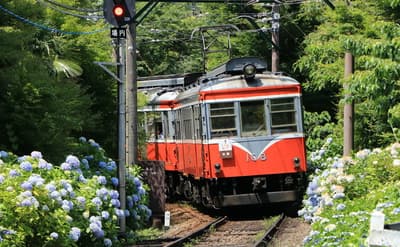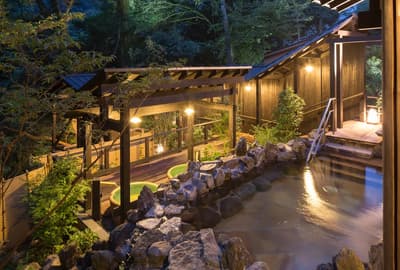“Hakone Onsen” welcomes visitors with its diverse attractions. It is a place where you can refresh both your mind and body while enjoying the natural beauty, history, and abundant hot spring resources.
Overview of “Hakone Onsen”
“Hakone Onsen” is located at the western end of Kanagawa Prefecture, within the Hakone volcanic caldera. It is renowned for its natural beauty and abundant hot spring resources. Access from Tokyo is very convenient, taking about 1.5 hours by Shinkansen or bus. Therefore, it is ideal for day trips or weekend getaways.
The history of “Hakone Onsen” is very old, with “Yumoto Onsen” being discovered in 738. During the Edo period, it was widely used as a hot spring resort for therapeutic bathing. Initially, there were seven hot spring areas known as “Hakone Nana-yu” (Seven Hot Springs of Hakone), but this has expanded to 17 locations, now known as “Hakone Jūnana-yu” (Seventeen Hot Springs of Hakone). Each hot spring area has its own unique history and culture, captivating visitors.
The Qualities and Benefits of “Hakone Onsen”
“Hakone Onsen” boasts a variety of spring qualities, providing various benefits to visitors. There are alkaline simple springs, acidic springs, sulfur springs, and many other types, totaling 345 sources. The output is also very abundant, at approximately 19,500 liters per minute.
Each type of spring has different benefits. For example, alkaline simple springs have a beautifying effect on the skin, while acidic and sulfur springs are effective for relaxation, joint pain, and skin diseases. Thus, “Hakone Onsen” is an ideal place for promoting health. Additionally, since the spring qualities differ by location, each visit offers new discoveries.
Introduction to “Hakone Jūnana-yu”
Here are some notable hot spring areas among the “Hakone Jūnana-yu”:
“Hakone Yumoto Onsen”
“Hakone Yumoto Onsen” is the gateway to “Hakone Onsen” and also the oldest hot spring area, discovered in 738. It flourished as a famous hot spring resort during the Edo period. With its convenient access, it hosts many tourist spots and accommodations.
“Miyanoshita Onsen”
Rich in history and culture, “Miyanoshita Onsen” was first discovered in the Muromachi period with natural spring water. During the Edo period, it was visited by feudal lords and wealthy merchants for therapeutic bathing. Even today, its history can still be felt.
“Gōra Onsen”
“Gōra Onsen” developed relatively recently after the opening of the Hakone Tozan Railway in the Taisho period. It offers many facilities where you can enjoy European-style hot spring treatments, making it recommended for those seeking relaxation.
“Sengokuhara Onsen”
Known as a highland resort hot spring, “Sengokuhara Onsen” is located in a vast grassland at an elevation of 700 meters. It is popular not only for its refreshing natural environment but also for its many tourist spots, making it ideal for families.
Enjoying “Hakone Onsen”
There are many activities to enjoy in “Hakone Onsen” beyond just the hot springs.
Tourist Spots
There are plenty of spots to enjoy history and art, such as “Hakone Shrine” and the “Hakone Open-Air Museum.” Boating on “Lake Ashi” and hiking are also recommended.
Seasonal Enjoyment
“Hakone” offers beauty in every season. In spring, cherry blossoms; in summer, a cool retreat; in autumn, colorful foliage; and in winter, snowy landscapes. Whenever you visit, you can enjoy different scenery.
Accommodations and Cuisine
“Hakone” has a variety of accommodations, from traditional inns to modern hotels. You can also enjoy local cuisine and specialties, allowing you to fully experience Japanese culture along with the hot springs.


